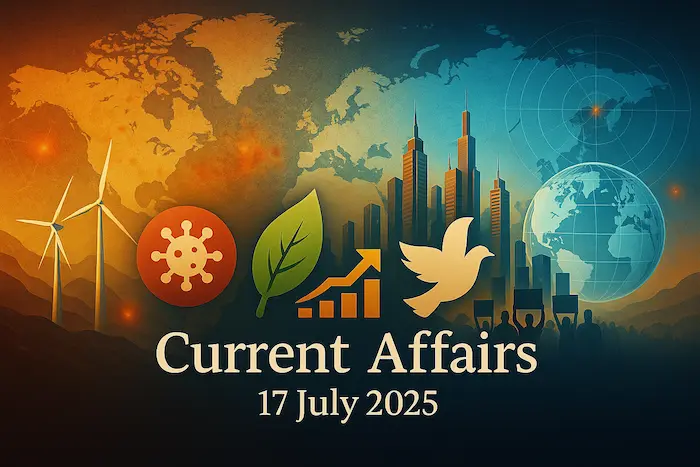1. 10 Years of Skill India Mission – Indian Society
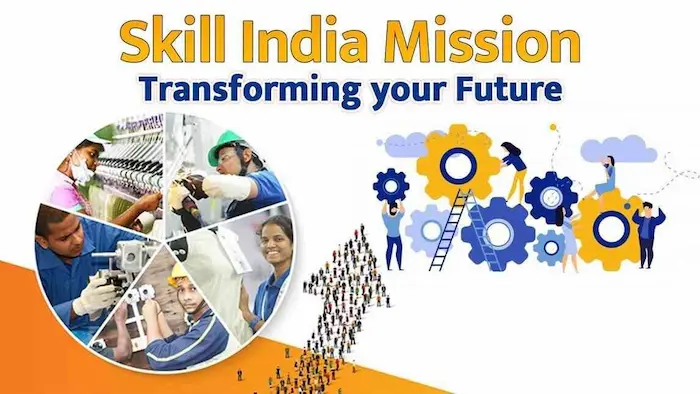
Why in News?
The Ministry of Skill Development and Entrepreneurship has launched a week-long celebration to mark the 10th anniversary of the Skill India Mission, which was initiated in 2015.
Key Details
- Launch Year: 2015
- Objective: To train 40 crore individuals by 2022 across various economic sectors.
- Target Groups: Rural youth, women, and marginalized communities.
- Total Beneficiaries So Far: Over 2.27 crore individuals trained.
Core Features:
- Alignment with NSQF: Courses are based on the National Skills Qualification Framework (NSQF), ensuring standardization and quality.
- Digital Integration:
- Certificates stored in DigiLocker.
- Integrated with the National Credit Framework (NCrF) to facilitate academic progression.
Major Components of Skill India Mission
- Pradhan Mantri Kaushal Vikas Yojana 4.0 (PMKVY 4.0)
- Short-term training, reskilling and upskilling.
- Target Group: 15–59 years
- Offers 400+ new-age courses (AI, Robotics, Green Jobs, etc.).
- Pradhan Mantri National Apprenticeship Promotion Scheme (PM-NAPS)
- Promotes on-the-job apprenticeship.
- Target Group: 14–35 years
- Includes financial support for establishments and apprentices.
- Jan Shikshan Sansthan (JSS)
- Community-based vocational training.
- Focus on non-formal skilling, especially for women and rural youth.
- Flexible and context-based curriculum.
Conceptual Linkages & Significance
- Youth Empowerment: Bridges the gap between education and employability.
- Social Inclusion: Addresses the socio-economic marginalization of rural and underprivileged communities.
- Demographic Dividend: Taps into India’s youthful population to support economic growth.
- Gender Empowerment: Skilling women enhances their participation in the formal workforce.
- Rural Development: Equips rural youth with skills that reduce migration and promote local entrepreneurship.
Exam Connect – Possible Questions
Prelims
1. Which of the following statements about the Skill India Mission is/are correct?
1.It is implemented by the Ministry of Education.
2.Pradhan Mantri Kaushal Vikas Yojana is a component of the mission.
3.It integrates certification through DigiLocker and the National Credit Framework (NCrF).
Select the correct answer using the code below:
A. 1 and 2 only
B. 2 and 3 only
C. 1 and 3 only
D. 1, 2 and 3
Answer: B. 2 and 3 only
2. The National Skills Qualification Framework (NSQF) is related to:
A. School curriculum reform
B. Standardization of vocational training
C. Teacher training programs
D. Digital literacy mission
Answer: B. Standardization of vocational training
Mains
1. Discuss the significance of the Skill India Mission in empowering marginalized communities and enhancing employability in India. How can it contribute to inclusive growth?
(Answer in 150–250 words)
2. India is rich in demographic dividend but poor in skill utilization. Critically analyze how schemes under the Skill India Mission address this paradox. (Answer in 150–250 words)
2. Rhino DNA Index System (RhODIS): A Forensic Tool to Combat Wildlife Crime – Environment

Why in News?
The Assam Forest Department is conducting DNA profiling of 2,500 rhino horns using the Rhino DNA Index System (RhODIS). This move aims to boost wildlife forensics and strengthen the fight against illegal rhino horn trade.
Key Features of RhODIS
- Full Form: Rhino DNA Index System
- Purpose: Wildlife forensics to deter and detect rhino poaching.
- Origin: Developed in South Africa, adapted in India by the Wildlife Institute of India (WII).
- Functionality: Creates a DNA database using genetic material from:
- Rhino horns
- Tissue samples
- Dung and blood
- Utility:
- Links confiscated horns to specific animals or poaching events.
- Generates forensic evidence admissible in court.
- Monitors illegal trade networks.
- Tracks genetic diversity and health of rhino populations.
About the Greater One-Horned Rhinoceros
| Feature | Details |
|---|---|
| Scientific Name | Rhinoceros unicornis |
| IUCN Status | Vulnerable |
| CITES | Appendix I |
| Indian Law | Schedule I – Wildlife Protection Act, 1972 |
| Habitat | India and Nepal |
| Key Indian Habitats | Kaziranga, Manas, Pobitora, Orang (Assam); Jaldapara, Gorumara (West Bengal); Dudhwa (Uttar Pradesh) |
| Population | Over 4,000 in 2024 (from ~1,500 in 1980s) |
| Assam’s Share | ~80% of global population |
| Kaziranga National Park | Highest population – 2,613 rhinos (2022) |
Conservation Measures
Indian Rhino Vision 2020 (Project Rhino)
- Launched: 2005
- Objective: Expand rhino population to seven protected areas in Assam.
- Approach: Translocation, anti-poaching patrols, habitat management.
Primary Threats
- Poaching: Driven by horn demand in illegal wildlife markets.
- Habitat loss: Due to floods, encroachment, and climate change.
- Myth-based demand: Misconceptions about rhino horn’s medicinal use.
Conceptual Understanding / Static Linkages
- Wildlife Forensics: Use of scientific methods (e.g., DNA analysis) to investigate crimes against wildlife.
- Biodiversity Conservation: Protecting species and genetic diversity.
- CITES & WPA: Legal frameworks for endangered species protection.
- Technology in Conservation: Role of digital tools and genetics in ecological sustainability.
Exam Connect – Possible Questions
Prelims
1. With reference to the Rhino DNA Index System (RhODIS), consider the following statements:
1.It was developed in India by the Wildlife Institute of India.
2.It helps in tracking rhino horns using genetic profiling.
3.It can be used to monitor population health and genetic diversity.
Which of the above statements is/are correct?
A. 1 only
B. 2 and 3 only
C. 1 and 2 only
D. 2 and 3 only
Answer: B. 2 and 3 only
2. The Greater One-Horned Rhinoceros is listed under which of the following?
1.Schedule I of Wildlife Protection Act, 1972
2.Appendix I of CITES
3.Critically Endangered in IUCN Red List
Select the correct answer using the codes below:
A. 1 and 2 only
B. 1 and 3 only
C. 2 and 3 only
D. 1, 2 and 3
Answer: A. 1 and 2 only
Mains
1. Discuss how scientific tools like RhODIS can strengthen wildlife protection and improve legal enforcement against poaching in India. (150–200 words)
2. Despite conservation success, the Greater One-Horned Rhinoceros continues to face threats. Evaluate India’s efforts in rhino conservation and suggest future strategies. (150–200 words)
3. New Butterfly Species Zographetus mathewi Discovered in the Western Ghats – Environment
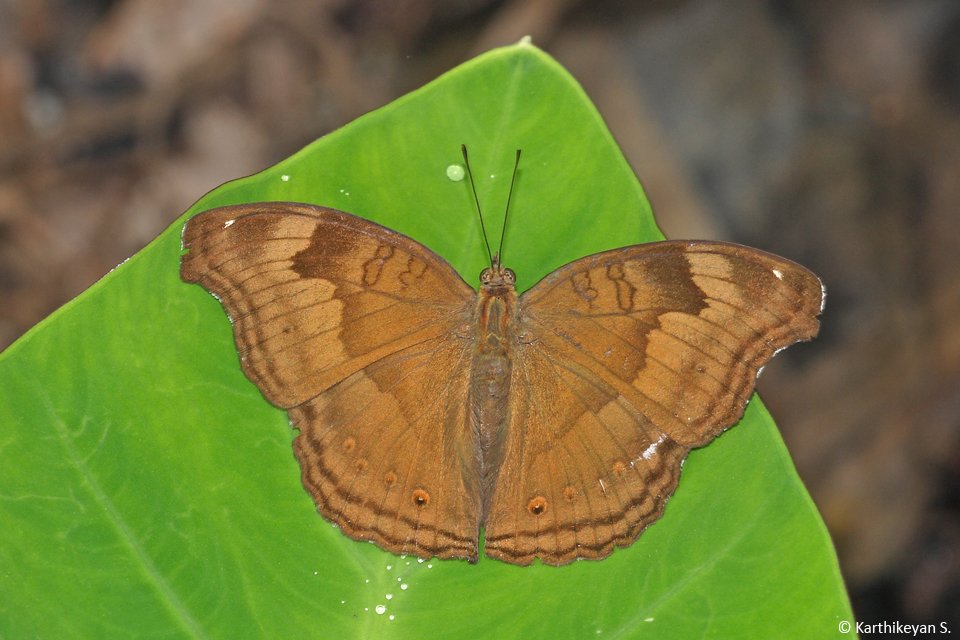
Why in News?
A team of Indian conservationists has discovered a new species of butterfly, Zographetus mathewi, in the Western Ghats, reinforcing the region’s global status as a biodiversity hotspot.
Key Features and Classification
| Feature | Details |
|---|---|
| Species Name | Zographetus mathewi |
| Family | Hesperiidae (Skipper Butterflies) |
| Genus | Zographetus (est. 1893 by Watson) |
| Location Found | Kerala, Western Ghats (low-elevation forests) |
| Distinguishing Traits | Unique wing venation, genitalia, and basal hair tuft |
| Named After | George Mathew, Indian entomologist |
| Number in Genus | 15 total species (5 in India) |
| Species Group | Zographetus satwa group |
Significance of the Discovery
- Scientific Importance: Highlights taxonomic diversity and evolutionary traits of Indian butterflies.
- Ecological Indicator: Butterflies are sensitive indicators of ecosystem health.
- Conservation Relevance: Reinforces the ecological value of the Western Ghats, a UNESCO World Heritage Site and one of eight “hottest hotspots” of biodiversity globally.
- Threats to Habitat: Deforestation, climate change, and fragmentation of forest corridors.
Conceptual & Static Linkages
- Endemism: A species restricted to a specific geographic location.
- Western Ghats: One of the four global biodiversity hotspots in India (others include Himalayas, Indo-Burma, Sundaland).
- Hesperiidae Family: Known as “skippers”, they are small, fast-flying butterflies.
- Taxonomy: The science of classification—important in conservation biology.
- UNESCO World Heritage Site: Western Ghats are listed for their ecological significance.
Exam Connect – Possible Questions
Prelims
1. With reference to the butterfly species Zographetus mathewi, consider the following statements:
1.It belongs to the family Papilionidae.
2.It was discovered in the low-elevation forests of Western Ghats.
3.It is endemic to India.
Which of the above statements is/are correct?
A. 1 and 2 only
B. 2 and 3 only
C. 1 and 3 only
D. 1, 2 and 3
Answer: B. 2 and 3 only
2. Which of the following is not correctly matched?
A. Hesperiidae – Skipper butterflies
B. Zographetus – Genus of butterflies
C. Western Ghats – UNESCO World Heritage Site
D. George Mathew – Tiger conservationist
Answer: D. George Mathew – Tiger conservationist
Mains
1. “The discovery of new endemic species in biodiversity hotspots like the Western Ghats reaffirms the need for ecological conservation.” In light of this statement, discuss the significance of such discoveries for India’s environmental strategy. (150–200 words)
2. What is endemism? Discuss how endemic species are both ecological treasures and conservation priorities, with examples from India. (150–200 words)
4. ICAR Celebrates 97 Years of Agricultural Innovation and Impact – Science and Technology
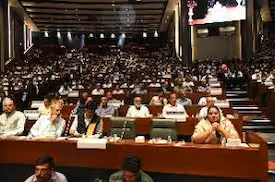
Why in News?
The Indian Council of Agricultural Research (ICAR) marked its 97th Foundation Day on July 16, 2024, celebrating its nearly century-long contributions to India’s agricultural transformation.
Key Features and Functions of ICAR
| Category | Details |
|---|---|
| Established | July 16, 1929 |
| Status | Autonomous body under DARE, Ministry of Agriculture |
| Network | 113 research institutes + 74 agricultural universities |
| Headquarters | New Delhi |
| Mandate | Research, education, and extension in agriculture and allied sectors |
Major Achievements
Foodgrain Production
- India achieved a record 353.95 million tonnes of foodgrains in 2024–25.
- Became world’s largest rice producer and second-largest wheat producer.
Crop Improvement
- Developed 679 field crop varieties, including bio-fortified ones.
- Released 83 horticultural crop varieties.
- Established 9 Clean Plant Centres to produce disease-free planting material.
Natural Resource Management
- Launched the National Soil Spectral Library.
- Promoted climate-resilient agriculture and sustainable practices.
Livestock Sector
- Registered 10 indigenous livestock breeds.
- Developed new vaccines and diagnostic kits for livestock health.
Recent Initiatives
- One Scientist One Product: Personalized extension and innovation model.
- Viksit Krishi Sankalp Abhiyan: Outreach programme reaching 1.35 crore farmers.
National and Global Outreach
- Established global excellence centers and national missions on various agricultural commodities.
Significance of ICAR
- Ensures food security through cutting-edge research.
- Promotes technology-driven agriculture.
- Bridges the gap between lab and land via farmer-centric innovations.
- Enhances agricultural education and capacity building.
Conceptual / Static Linkages
- Agricultural Research and Education: Core to India’s Green Revolution.
- Biofortification: Nutrient-enriched crops to fight malnutrition.
- Climate-Resilient Agriculture: Ensures sustainability amid environmental stress.
- Livestock Genomics & Breeding: Boosting rural livelihoods.
Exam Connect – Possible Questions
Prelims
1. With reference to the Indian Council of Agricultural Research (ICAR), consider the following statements:
1.It functions under the Ministry of Science and Technology.
2.It was established in 1929.
3.It is responsible for developing biofortified crop varieties.
Which of the statements given above is/are correct?
A. 2 and 3 only
B. 1 and 2 only
C. 1 and 3 only
D. 1, 2 and 3
Answer: A. 2 and 3 only
2. What is the objective of the “One Scientist One Product” initiative launched by ICAR?
A. To assign one scientist to monitor a single crop zone
B. To promote patent filing by individual researchers
C. To link each scientist to a product innovation for field implementation
D. To conduct single-crop research trials at national level
Answer: C. To link each scientist to a product innovation for field implementation
Mains
1. Discuss the role of ICAR in promoting agricultural innovation and ensuring food security in India. Highlight its recent achievements and future priorities. (150–200 words)
2. “Agricultural research institutions like ICAR are vital for sustainable rural development.” Analyze this statement in the context of climate change and rural livelihoods. (150–200 words)
5. Preserving India’s Linguistic Secularism: A Constitutional Imperative – Polity

Why in News?
In the wake of increasing language-based tensions and instances of cultural exclusion, there is a renewed call to reaffirm India’s commitment to linguistic secularism, which is crucial to national unity and democratic pluralism.
What is Linguistic Secularism?
- An Indian extension of secularism that includes language and culture along with religion.
- Emphasizes inclusion, mutual respect, and equal state treatment to all linguistic communities.
- Ensures that language is not a basis for discrimination or exclusion in a democratic society.
Constitutional Safeguards for Linguistic Diversity
| Article | Provision |
|---|---|
| Article 343 | Hindi in Devanagari as the official language of the Union; allows English and state languages. |
| Eighth Schedule | Lists 22 Scheduled Languages eligible for state promotion and recognition. |
| Article 29 | Protects the rights of linguistic and cultural minorities to conserve their language and script. |
| Article 350A & 350B | Ensures provision for instruction in mother tongue and appoints Special Officers for linguistic minorities. |
Important Note: India does not have a “national language”. Hindi is the official language of the Union, while states have the autonomy to choose their own official languages.
Challenges of Language-Based Politics
- Social Fragmentation: Linguistic majoritarianism and exclusion of non-local speakers create societal rifts.
- Regional Tensions: Imposition of language or linguistic chauvinism can ignite protests and alienate communities.
- Policy Conflicts: Tensions between Union and state policies on language use in education and administration.
Role of Institutions in Promoting Linguistic Harmony
- Political Leadership: Must refrain from exploiting language for populism or vote-bank politics.
- Educational Institutions: Should encourage multilingual education and linguistic empathy.
- Civil Society and Media: Must promote inter-lingual dialogue and discourage stereotyping or hate speech.
Conceptual Linkages for Exam
- Secularism in Indian Context: Inclusive, pluralistic, and cultural coexistence.
- Federalism and Language: State autonomy in language decisions within a unified constitutional framework.
- Eighth Schedule Languages: Current count – 22, including Bodo, Maithili, Santhali, Dogri, etc.
- NEP 2020: Advocates for mother tongue as medium of instruction in early education.
Exam Connect – Possible Questions
Prelims
1. Which of the following statements about India’s linguistic policy is/are correct?
1.India has 22 scheduled languages under the Eighth Schedule.
2.Hindi is the national language of India.
3.States in India are free to adopt their own official languages.
Select the correct answer using the codes below:
A. 1 and 2 only
B. 1 and 3 only
C. 2 and 3 only
D. 1, 2 and 3
Answer: B. 1 and 3 only
2. Article 29 of the Indian Constitution primarily safeguards the:
A. Right to primary education
B. Right to freedom of speech
C. Right to conserve one’s language and culture
D. Right to equal wages
Answer: C. Right to conserve one’s language and culture
Mains
1. “Linguistic secularism is central to India’s unity in diversity.” In the light of recent language-based tensions, examine the constitutional safeguards and suggest ways to preserve India’s linguistic pluralism. (150–200 words)
2. Discuss the challenges of language-based identity politics in India. How can constitutional institutions and civil society mitigate the risks of linguistic polarization? (150–200 words)
6. Criminalising Adolescent Relationships: Supreme Court’s Evolving Stance – Polity
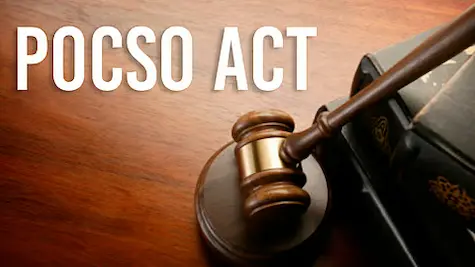
Why in News?
In a landmark 2025 sentencing judgment, the Supreme Court of India, in Re: Right to Privacy of Adolescents, invoked Article 142 to address the limitations of criminal law in dealing with adolescent consensual relationships, particularly under the POCSO Act.
Background of the Case
- The relationship led to institutionalization of the girl and arrest of the man under POCSO.
- The couple married and had a child before the girl turned 18.
- The Calcutta High Court acquitted the man in 2022, citing context but faced criticism for minimizing concerns about adolescent protection.
- The Supreme Court:
- Restored the conviction,
- Did not impose a sentence, invoking Article 142,
- Set up an expert committee to assess the well-being of the woman.
Key Constitutional and Legal Provisions
| Article / Law | Provision |
|---|---|
| Article 142 | Empowers the SC to pass any order necessary to do “complete justice”. |
| POCSO Act, 2012 | Protects children (<18 years) from sexual offences; does not recognize adolescent consent. |
| Article 21 | Right to life and personal liberty – includes autonomy, privacy, and dignity. |
| Right to Privacy (2017) | Recognized as a fundamental right; includes bodily autonomy and decisional privacy. |
Issues with the Current Legal Framework
- No recognition of adolescent consent under POCSO, even in consensual relationships.
- Blanket criminalisation often punishes lower-income or marginalized communities.
- Harm to adolescent girls: Stigma, institutionalization, and disrupted lives.
- Misuse by families: To control relationships, especially in caste- or class-based contexts.
- Tension between protection and autonomy: The law does not account for evolving maturity and agency in adolescents.
Implications and the Way Forward
- Judicial Sensitivity: Supreme Court has demonstrated evolving understanding of adolescent rights.
- Need for Law Reform:
- Introduce graded legal responses for consensual adolescent relationships.
- Consider contextual consent in line with developmental psychology.
- Social Awareness: Role of education, parents, and civil society in supporting informed decision-making by adolescents.
- Multi-disciplinary Committees: As done by SC, to guide long-term reform of child protection laws.
Conceptual / Static Linkages
- Child Rights & Protection: Best interest of the child is central under Indian and international law (UNCRC).
- Judicial Activism vs. Judicial Restraint: Use of Article 142 as a tool for justice.
- POCSO Act: Progressive but often rigid in application.
- Restorative Justice: Emerging model to replace punitive systems in sensitive cases.
Exam Connect – Possible Questions
Prelims
1. With reference to Article 142 of the Indian Constitution, consider the following:
1.It allows the Supreme Court to enforce fundamental rights only.
3.It is used to ensure “complete justice” in any matter before the court.
Which of the above is/are correct?
A. 1 only
B. 2 only
C. Both 1 and 2
D. Neither 1 nor 2
Answer: B. 2 only
2. The Protection of Children from Sexual Offences (POCSO) Act, 2012:
A. Allows consensual sexual activity between minors aged 16–18
B. Recognizes adolescent consent if age difference is less than 5 years
C. Criminalizes all sexual activity involving individuals under 18
D. Applies only to girls under 18
Answer: C. Criminalizes all sexual activity involving individuals under 18
Mains
1. Laws meant to protect children must also consider the evolving capacity and rights of adolescents. Critically examine the limitations of the POCSO Act in this regard. (150–200 words)
2. The Supreme Court’s intervention in adolescent relationship cases signals a move towards restorative justice. Discuss the role of judiciary in balancing law, consent, and child rights in India. (150–200 words)

